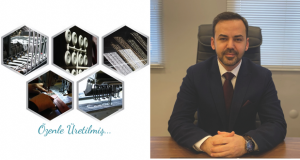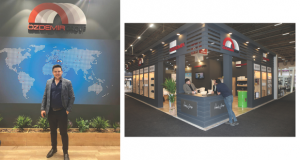Hohenstein Institute sets new standards with its realistic test for mattress and pillow encasings
BÖNNIGHEIM – In Germany, unfortunately one person in ten suffers from an allergy to dust mites. It is the excrement from the dust mites that has an allergenic effect on people. Unfortunately for allergy-sufferers, dust mites particularly like living in mattresses and beds. Therefore, it is common for the people affected to experience a blocked nose or itching first thing in the morning. Special covers for mattresses and beds known as encasings are intended to help combat the problem. They act as barrier textiles, preventing any contact between the dust mite excrement and the person’s respiratory passageways. Manufacturers face the challenge of designing the covers technically in such a way that they remain proof against dust mite excrement even as people move about in their sleep. Scientific studies show that this kind of encasing can reduce the number of allergens. However, it is essential that the product is of a high quality. If the quality is not good enough, there is a risk that critical amounts of the allergens in the excrement could pass through the covers and trigger allergic symptoms in the sleeping person. The Hohenstein Institute tests the resistance of encasings to allergens to assess how excrement-proof and effective they are. The Hohenstein Institute now offers the allergen-resistance testing of mattress and bed covers using real dust mite excrement as an accredited service. In the test, all components of the encasing, that is to say the textile surface, the edge seams and the zip fastener, are covered with dust mite excrement and the movements of someone sleeping on it for eight hours are simulated. The volume of allergens from the dust mite excrement that passes through the textile, seams or zip of the encasing is measured. This allows exact information to be obtained for the first time about whether the critical level of two micrograms of allergen – what is called the sensitization threshold – is exceeded during the night, thereby posing a risk for allergy-sufferers. The Hohenstein Institute is one of the few laboratories in the world that is able to carry out tests with living dust mites and their allergy-inducing excrement. For the manufacturers of mattress covers, testing the seam, textile and zip separately has the advantage of allowing the weak points in a product to be identified so that they can be rectified. Testing encasings with real dust mite excrement is setting new standards and attracting interest from around the world. Jeffrey D. Miller M.D., President of the encasing manufacturer Mission: Allergy Inc. (USA) and member of the American Board of Allergy and Immunology, says: “We were happy to have our allergen-barrier encasings studied by the Hohenstein Institute. The studies performed on our allergen-barrier encasings by the Hohenstein Institute confirmed the impermeability of the encasing fabric and seams to the dust mite allergen.” The Hohenstein scientists in the department of Hygiene, Environment & Medicine endorse materials that have been tested for allergen-resistance with the “House dust and mite barrier” quality label. The label can be awarded to encasings which have been proven to keep the dust mite allergen “Der P1” away from a sleeping person so effectively that the sensitization threshold is not reached during any phase of their sleep. This provides allergy-sufferers with a reliable aid to decision-making when they are selecting a medically tested mattress or bed cover. Businesses in the hospitality industry, such as technically advanced hotels can now benefit from this testing. The Hohenstein quality label can now be used for the benefit of customers to highlight bedding that is suitable for allergy-sufferers in that it has passed a realistic test and really minimizes the risk of an allergic reaction in sufferers from dust mite allergy.
 SleepTech Magazine Mattress, Accessories, Machinery, Raw Materials
SleepTech Magazine Mattress, Accessories, Machinery, Raw Materials


